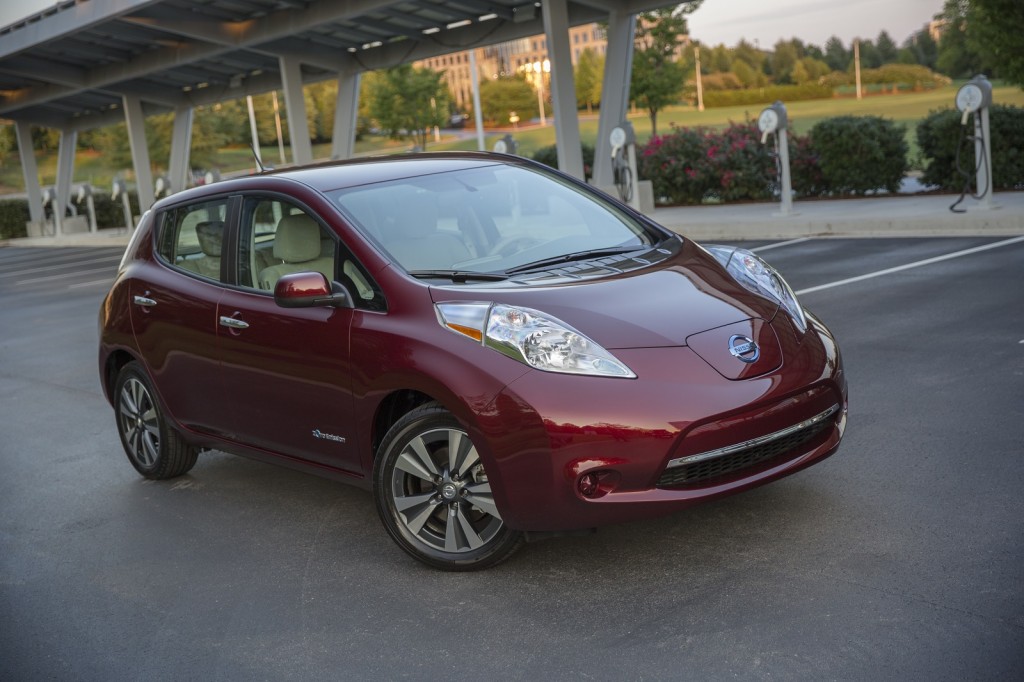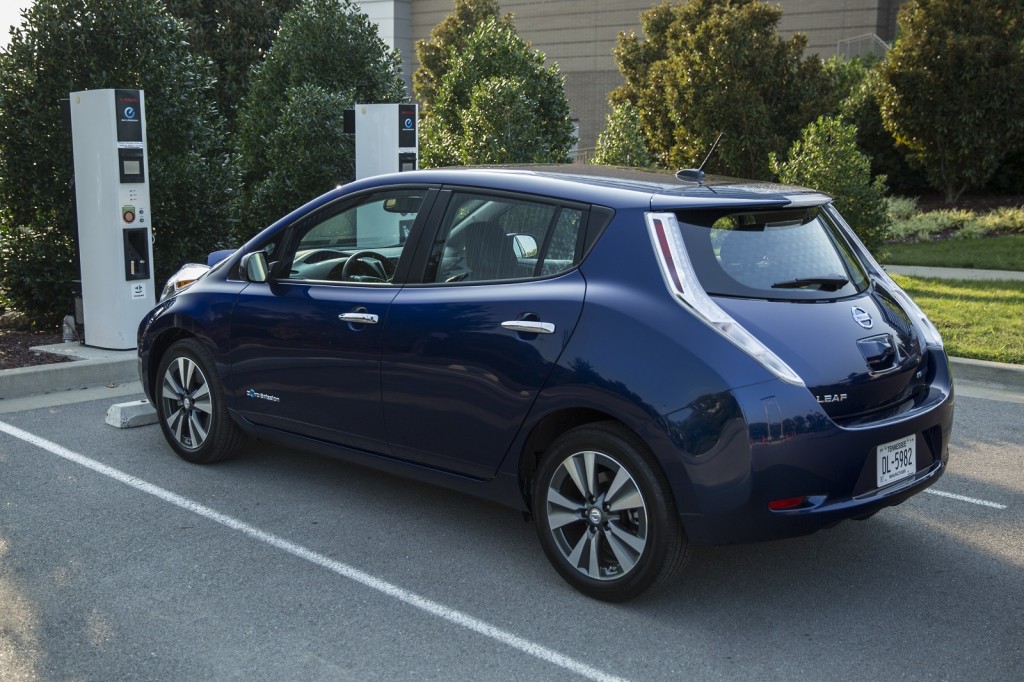Suppose you could buy a new 2016 Nissan Leaf rated not at 107 miles but 155 miles. That would be a far more desirable car, wouldn't it?
Well, you can--but only in Europe.
The punchline is that the two cars are identical. What differs is the rating procedure used to calculate the range of an electric car.
DON'T MISS: Nissan Gripz Concept: 2015 Frankfurt Auto Show Live Photos & Video
In a press conference yesterday at the Frankfurt Motor Show for its GripZ concept--a highly stylized small crossover about the size of today's Nissan Juke--Nissan's European arm noted that the 2016 Leaf would soon go on sale with increased range.
As in North America, the Leaf SV and SL models will carry a 30-kilowatt-hour battery pack that boosts range 20 percent.
While the U.S. Environmental Protection Agency puts that model's range at 107 miles combined, its European range is rated at 250 kilometers, or 155 miles.

2016 Nissan Leaf
As with gasoline and diesel cars, the efficiency ratings posted for electric cars depend how they're tested. And the test procedures used by the New European Driving Cycle are both shorter and slower than the EPA's procedures.
The EPA's city test is 31 minutes long, for example, while the European "Urban" test is 13 minutes long.
NEDC's "Extra urban" test takes 6 minutes, 40 seconds; the equivalent EPA highway test is 12 minutes, 45 seconds.
ALSO SEE: 2016 Nissan Leaf Offers 107-Mile Range With 30-kWh Battery; Leaf S Unchanged
Reflecting differing traffic conditions between centuries-old European cities and sprawling post-war suburbia in the U.S., speeds are different too.
During that 13-minute NEDC urban test, the highest speed attained barely exceeds 30 mph, and that rate is maintained for a mere 12 seconds.
The rest of the test is made up of slow acceleration and deceleration, while more than 2 minutes is spent at a standstill.

2016 Nissan Leaf
By comparison, the EPA's city test occasionally reaches almost 60 mph, while the rest of it is spent accelerating up to 30 mph and then returning to a dead stop--and repeating--for true stop-start driving that's much harder on efficiency.
It's the same with highway testing--not only are the EPA's tests longer, but cars spend much more time at greater speeds.
The basic highway test cycle still only tops out at an unrealistic 60 mph, and averages only 48 mph, so it's not representative of real-world driving today.
MORE: Why European Gas-Mileage Ratings Are So High--And Often Wrong (May 2014)
The EPA also takes into account extra variability, such as 'High Speed', 'Air Conditioner,'and 'Cold Temperature' tests, to adjust the city and highway efficiency posted on every new car's window sticker to keep it relevant to real-world use.
That all adds up to significant differences between U.S. range ratings for electric cars and those found on identical cars in Europe.
U.S. combined range ratings are generally considered accurate for electric cars operated in temperate climates, where cabin heating isn't required.

2016 Nissan Leaf
When full cabin heating is required, range can decline substantially, sometimes as much as 30 percent. Heating only the seats and steering wheel has less impact on range.
But European car buyers are increasingly unhappy with the growing discrepancies between fuel-economy ratings and their real-world results. Reports indicate that those differences are increasing, which has led to proposals for changes to the testing regimes.
There are also at least a few proposals to commonize efficiency testing across the major markets, which would provide consistent ratings for the same cars in Europe and North America.
RELATED: Europe's Gas-Mileage Test Results Move Further Away From Reality: Report
Meanwhile, U.S. electric-car buyers can only dream of that 155-mile Leaf for the moment.
They may not have all that long to wait, though: The second-generation Nissan Leaf expected to launch as a 2017 or 2018 model will likely have at least one variant that provides a range of 150 to 200 miles.
On the U.S. test cycle.
Press days in Frankfurt end today. To keep up with all of our latest coverage, head over to our Frankfurt Auto Show news hub.
_________________________________________________












